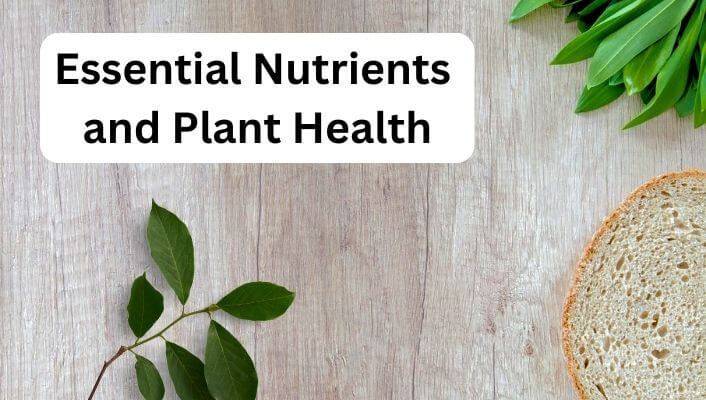Much of what plants need to develop is already in the ground and air. Oxygen, carbon, and many valuable substances are freely available to crops. However, when it comes to substances such as phosphorus, potassium, or nitrogen, the available quantity is small, especially when it comes to large sown areas. And without basic macro elements, plants cannot thrive.
Magnesium, sulfur, and calcium are also helpful for the successful cultivation of various crops, but in a smaller amount, which is why they are called secondary macroelements. Anyway, growers need to remember both. Otherwise, you risk facing the effects of nutrient deficiency in plants.
There are several causes of plant nutrient deficiency. Valuable components may not be in the soil, or there may not be enough of them. The second reason is that plants cannot absorb nutrients in full. It can happen because of improper watering, damaged roots, and poor drainage.
An imbalance in soil pH can also interfere with the normal absorption of beneficial components. When pH is not optimal, some nutrients become bound and unavailable for crops.
Plants absorb iron best in acidic soil. Alkaline soil, on the contrary, can hinder absorption, even if iron is present.
Post Contents
Nutrient Deficiency Symptoms In Plants
Nitrogen
This component is present in every living cell and is indispensable for creating proteins and metabolism. H is essential for facilitating energy production and transmission. The process of photosynthesis largely depends on it. Nitrogen accelerates growth, increases the yield of seeds and fruits, and improves the quality of leaf and forage crops.
The main signs of deficient N are:
- Slow growth
- Small and yellowish leaves
Phosphorus
This component promotes rapid growth, blooming, and root development. formation of oils, sugars, and starches also depends on phosphorus.
Recognizing P deficiency:
- Inadequately developed roots
- Leaf tips may appear burnt
- Older leaves may turn dark green or reddish
Potassium
Plants absorb K in larger amounts than any other mineral element except nitrogen and, in some cases, calcium. This component helps to build protein, strengthens immunity to various diseases, and supports photosynthesis.
Potassium deficiency can be indicated by:
- Small unhealthy fruits
- Wilt leaves
- Young leaves are pale, yellow, or yellow-white
Calcium
This element is an integral part of the plant cell wall. It also helps to transport other nutritional components and strengthen the plant.
What are some signs of nutrient deficiency in plants? The following factors indicate Ca deficiency:
- Low vigor
- Few newly grown leaves
- New leaves can appear distorted or have an irregular shape.
When a plant lacks certain nutrients, the most noticeable sign is a change in the color or shape of its leaves. However, it’s crucial to take into account that the symptoms of different nutrient deficiencies can be similar, and it’s not uncommon for a plant to experience multiple deficiencies at once.
Preventive Measures and Treatment
Now that we’ve discussed the question about what are the symptoms of nutrient deficiency in plants, it’s time to discuss how to solve this problem. Compost and fertilizers high in nitrogen can help combat the deficiency of this element. If you notice symptoms of potassium deficiency, which enables plants to resist disease, you have several ways to combat it.

The application of potassium-rich fertilizer or organic matter is a way to treat your plants and soil when P is deficient. However, it’s also recommended to maintain optimal soil pH. In practice, the grower needs to monitor and adjust the pH regularly. Potassium absorption is also hampered by excessive humidity, so it is necessary to reconsider watering and ensure good drainage so that this element is better absorbed.
Phosphorus strengthens the shoots and root system. Usually, this substance is more than enough in various types of soils. However, if you experience a deficiency, apply a high-phosphorus fertilizer around the root zone.
Bone meal or superphosphate fertilizer in the recommended dose will come in handy. It is also necessary to maintain the correct soil pH, not to limit the availability of this component for crops. At the same time, it must be remembered that excess phosphorus blocks the absorption of other elements.
The presence of magnesium ensures the functioning of enzymes and optimal growth of crops. The deficiency of this component can be eliminated with the help of appropriate fertilizers, such as a solution of Epsom salts.
EOSDA Crop Monitoring & Plant Nutrient Deficiency
Satellite technology cannot accurately determine what substance your crops are lacking. However, thanks to them, farmers can identify stress in plants and recognize the signs of nutrient deficiency in plants.
EOS Data Analytics, a provider of reliable satellite analytics based on AI technologies, has created the EOSDA Crop Monitoring, an all-in-one solution for precision and sustainable farming. This solution provides growers with comprehensive information about the condition of their fields.
Calculation of various vegetation indices is available on the platform. It helps to identify crop stress easily and analyze its cause on time. EOSDA Crop Monitoring is an early warning system for nutrient deficiencies.
Thanks to the Zoning feature, users can create maps and use them to apply seeds and fertilizers rationally based on crop health data. By utilizing this feature, farmers can identify areas of high and low productivity over a long period. With the help of vegetation maps, growers can quickly identify the areas that require nitrogen fertilization.
The reliable weather forecasting feature of EOSDA Crop Monitoring facilitates efficient treatment for plant nutrient deficiency. Knowing the upcoming weather helps choose the best day for fertilization, avoid leaching chemicals, and achieve better results.

